Recent Articles
Popular Makes
Body Types
2021 Mazda CX-30 vs. 2021 Subaru Crosstrek
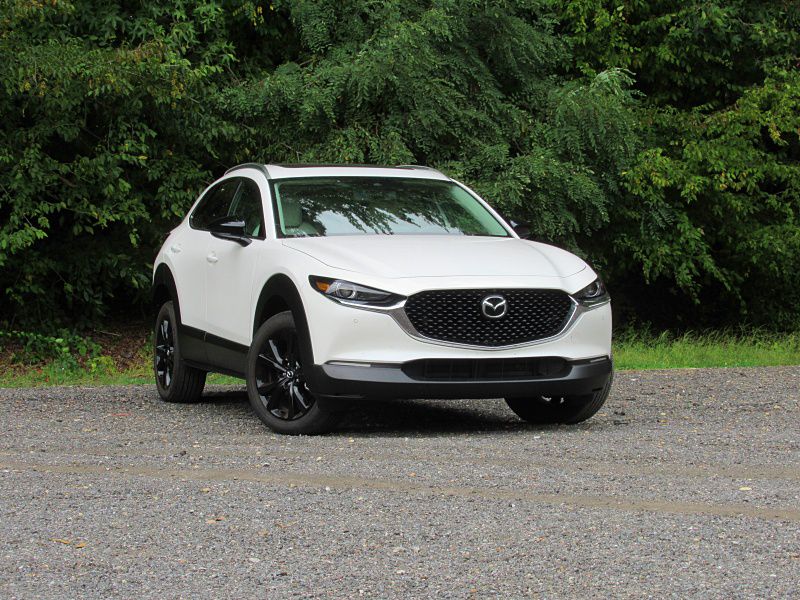
2021 Mazda CX-30 Turbo ・ Photo by Brady Holt
It’s a common complaint: These hot-selling subcompact crossovers are just small hatchbacks with plastic trim and higher prices. Just take a look at the sales-leading Subaru Crosstrek and the critically acclaimed Mazda CX-30. The Crosstrek doesn’t even change the Subaru Impreza hatchback’s body or interior — just dresses it up and lifts it a few inches higher off the ground. And the CX-30 isn’t much further removed from the Mazda3 hatchback. Both hatchbacks even join their crossover counterparts in offering all-wheel drive.
Still, if you’re drawn to these vehicles, you’ll find that they’re two very different types of raised hatchbacks. Not only do they adopt entirely different aesthetics, but one of them also wins out when it comes to substance. We tested both these subcompact crossovers to break down which one is best in different ways, so you can decide which little SUV is best for you — and name our own overall winner.
Exterior Design
In silhouette, the CX-30 and Crosstrek aren’t so different. They have the long hoods, low roofs, and diagonally slanted rear windshields of a small car, rather than the boxy, upright profiles of a truck. But when the details come into focus, Mazda and Subaru took very different approaches.
The CX-30 looks like a Mazda car, just a bit taller and with lots of plastic trim around the fenders. It’s clean and classy, yet also with a touch of sporty menace in its slim lights and big grille. From the rear end, we also catch a trace of Alfa Romeo. The Crosstrek, meanwhile, embraces a rugged, outdoorsy vibe. Chunks of black plastic are slapped on everywhere you might expect to scrape against something, and the roof is topped with big, sturdy luggage racks. It’s hard to imagine calling the Crosstrek a pretty car, but it’s the only one of the two that would look good covered with dirt and mud. We won’t choose for you, so we’ll call this category a tie.
Tie
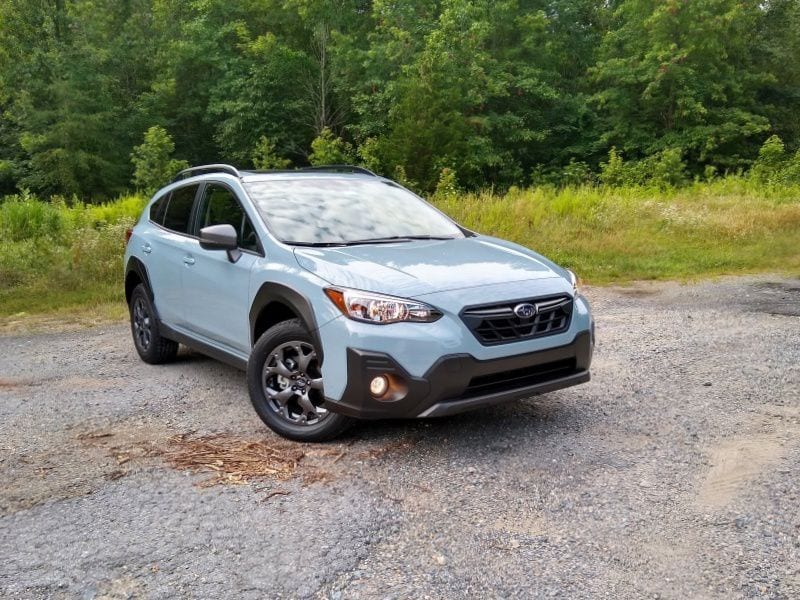
Photo by Brady Holt
Interior Design
Inside, the Crosstrek and CX-30 again take different vibes. The CX-30 is stark, minimalistic, and beautifully finished except for a barebones headliner. Mazda locates the controls for its 8.8-inch infotainment display between the front seats, cleaning up the dashboard. The problem with this arrangement is that the controls become more complicated to operate, especially since the screen lacks touch capabilities — everything goes through a rotary knob.
We’re going to award this category to the Crosstrek because it’s more functional. The infotainment screens are smaller (6.5 inches on base models, 8 inches on upper trim levels like our test vehicle), but they’re blissfully easy to use by comparison. And while the Crosstrek’s interior focuses more on a funky, outdoorsy vibe rather than a luxury one, there’s genuine quality underlying it. You’d still pick the Mazda if you like a premium flavor, but we’ll award this category to the Subaru.
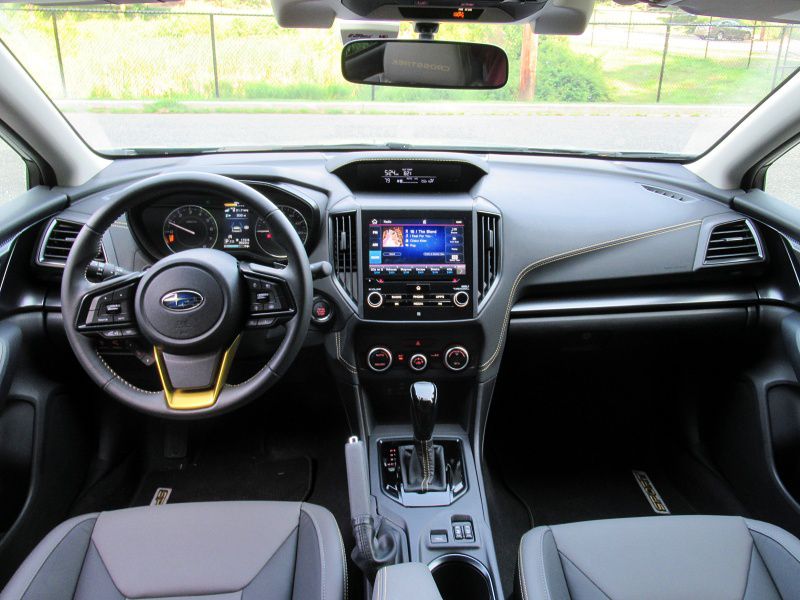
Photo by Brady Holt
Interior Comfort
Now we’re in less of a gray area. The Crosstrek and CX-30 have similar interior space on paper, but we found the Subaru far more comfortable for both front and rear passengers.
Although Mazda pitches itself as a sporty performance-focused brand, we found the Crosstrek’s front seats were actually better at holding their occupants snugly in place. They’re also cushier than the Mazda’s seats, and we didn’t find them confining despite their supportive bolsters. The even bigger difference is in the back, where even tall adults can stretch out comfortably in the Crosstrek but have limited knee clearance in the CX-30. There’s also better visibility out of the Subaru than the Mazda.
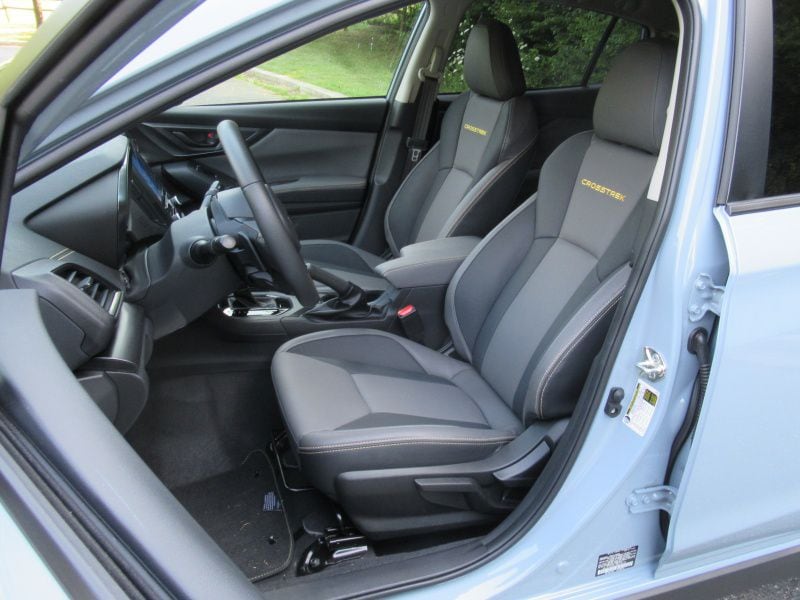
Photo by Brady Holt
Cargo and Utility
Despite the Crosstrek’s bigger backseat, its luggage capacity isn’t much greater than the CX-30. Both vehicles have fairly limited space with the rear seats in place: 20.8 cubic feet in the Subaru and 20.2 cubic feet in the Mazda. The Crosstrek does pick up an advantage when you fold the seats down: 55.3 cubic feet versus the CX-30’s 45.2 cubic feet.
Another Subaru advantage comes if you’re carrying stuff outside the vehicle. Not only does it have the hardy roof rack we talked about, but only the Crosstrek is rated to pull a trailer. While its 1,500-pound capacity won’t handle a speedboat, Mazda doesn’t recommend towing in the CX-30 at all.
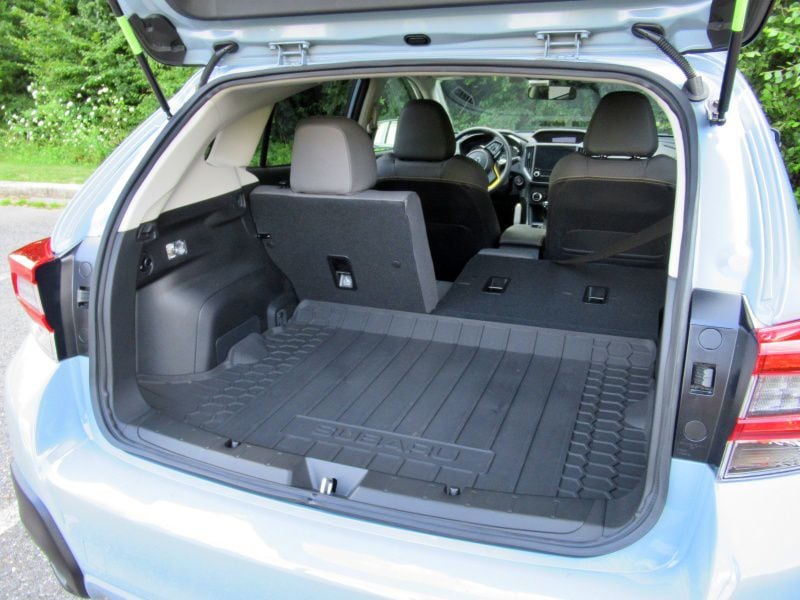
Photo by Brady Holt
Driving Experience
Some auto reviewers have found the CX-30 to be a delight to drive. We’re less entranced, but it’s still our pick over the Crosstrek for everyday driving. Its base engine — a 2.5-liter four-cylinder with 186 horsepower — is big for a subcompact crossover, and a turbocharged version of the engine pushes output to a crazy 227 hp on regular-grade fuel and 250 hp on premium. But we didn’t find the steering as lively and responsive as other small Mazdas, including the Mazda3. And while no CX-30 is slow, the turbo model is neither gleefully eager nor sweet-sounding; both engines make a similar hum. Overall, the CX-30 puts comfort and quietness first and excitement second.
The Crosstrek, though, is even less rewarding to drive. It’s certainly comfortable, with its compliant suspension taking potholes and ruts in stride. But the extra-light steering and soft suspension mean you have to slow down more to take a curve. Base models get a noisy, sluggish 2.0-liter four-cylinder making just 152 horsepower, and even this year’s new 2.5-liter (standard on upper-trim models) improves to just 182 horsepower. We’d choose the Crosstrek if we were driving in mud or snow, thanks to its generous 8.7 inches of ground clearance and highly regarded symmetrical all-wheel drive, but we’d rather commute to work in the CX-30.
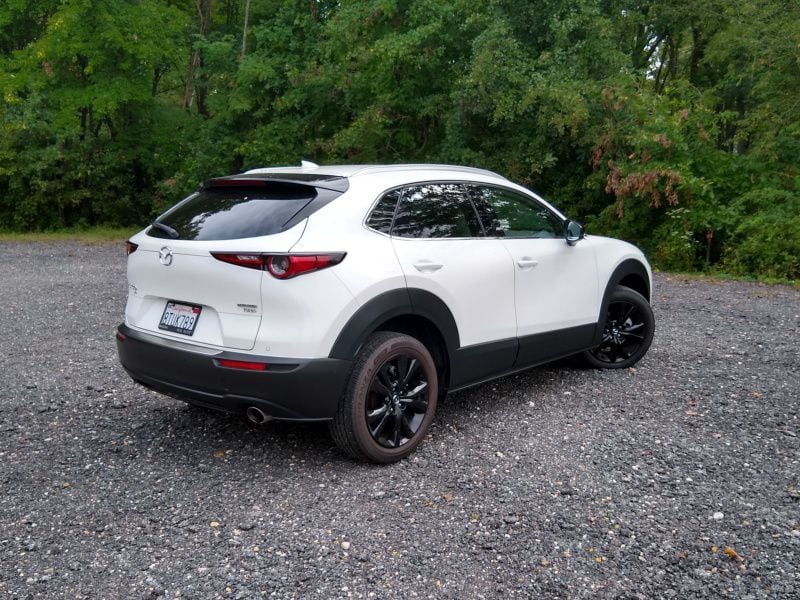
Photo by Brady Holt
Fuel Economy
It turns out those little Crosstrek engines are good for something: reducing fuel costs. Despite standard all-wheel drive, the base 2.0-liter with a continuously variable automatic transmission gets EPA estimates of 28 mpg in the city, 33 mpg on the highway, and 30 mpg combined, while the bigger 2.5-liter is right behind: 27 mpg city, 34 mpg highway, and 29 mpg combined. There’s also a plug-in hybrid model that can travel up to 17 miles per electric charge, then average 35 mpg afterward. And there’s a six-speed manual with the 2.0-liter engine that gets a low 22 mpg city/29 mpg highway, though we’re optimistic that we’d beat that in real-world driving.
By contrast, the most economical CX-30 — the non-turbo engine with front-wheel drive — gets an estimated 25 mpg city, 33 mpg highway, 28 mpg combined, while AWD reduces efficiency by about 2 mpg. The turbo, sold only with AWD, is right behind: 22 mpg city, 30 mpg highway, and 25 mpg combined. That’s a small mileage premium for all that extra power, but it’s nothing like the Crosstrek. Every CX-30 has a six-speed automatic transmission. We averaged 31 mpg in an all-wheel-drive non-turbo CX-30, compared with 30 mpg in a 2.5-liter Crosstrek — which gives us pause. But the Subaru still comes out ahead for its hybrid powertrain and apples-to-apples EPA scores.
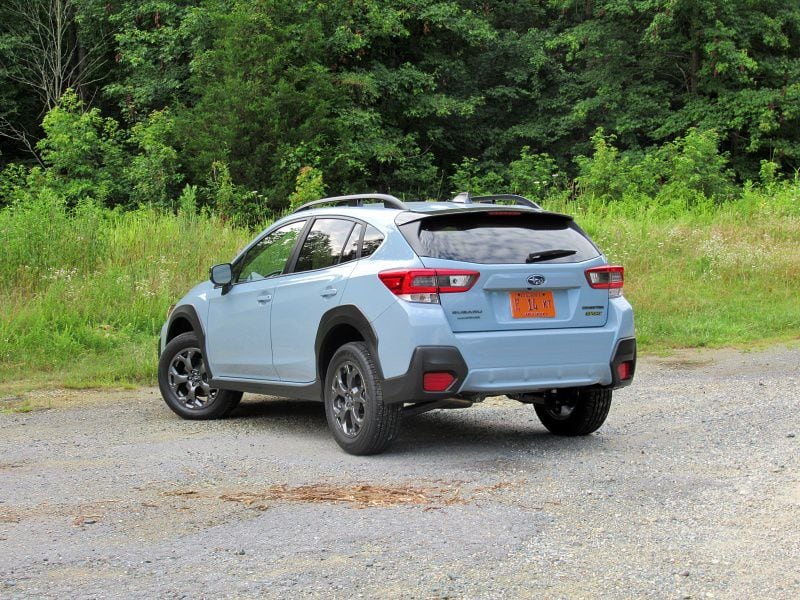
Photo by Brady Holt
Safety
Both the CX-30 and Crosstrek are safety standouts, with lots of driver-assistance technology, top ratings of Good in all Insurance Institute for Highway crash tests, and overall five-star ratings from the National Highway Traffic Safety Administration. But the CX-30 comes out a bit ahead.
First of all, the Mazda also scored five stars in each of its NHTSA tests as well as its overall score; the Subaru pulled off a less impressive four stars. Secondly, most Crosstrek trim levels have Poor-rated headlights in the IIHS illumination evaluation, while all CX-30 trims now score Good. And lastly, the CX-30 is more widely available with blind-spot monitoring than the Crosstrek; the Mazda has it standard on all but the base model, while you need an expensive option package or the top Crosstrek trim to add it to the Subaru. We’ll note that the CX-30 also appears to have more standard safety features like automatic emergency braking, adaptive cruise control, and lane-keeping assistance. While that’s technically true, Subaru only leaves them off Crosstreks with a manual transmission; Mazda sells the CX-30 only with an automatic anyway. Still, where these cars have apples-to-apples differences, the Mazda comes out ahead.
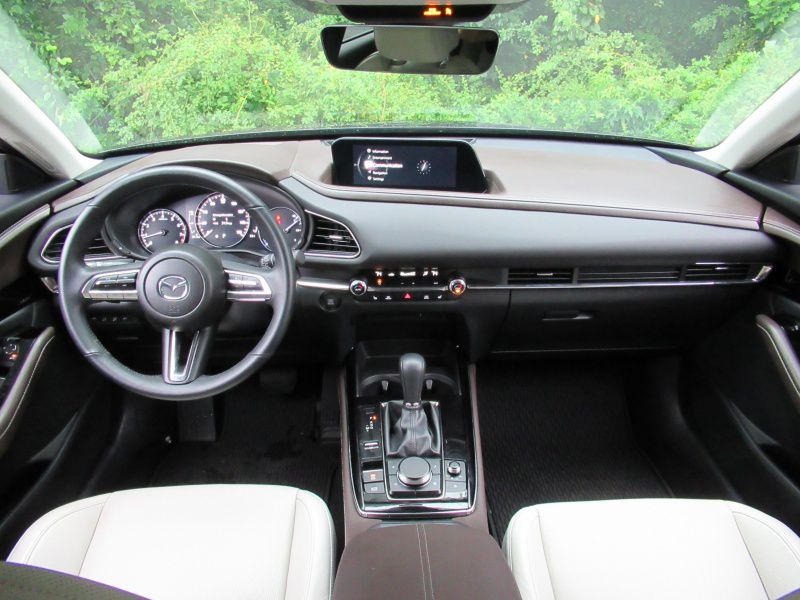
Photo by Brady Holt
Pricing and Features
Because the CX-30 is positioned as a premium-grade vehicle and the Crosstrek comes off as more utilitarian, you might expect to pay less for the Subaru. Not so. The CX-30 starts at just $22,050 despite standard features that include an eight-speaker stereo, rain-sensing windshield wipers, a Wi-Fi hotspot, and two USB ports — none of which is included on the base Crosstrek, which starts at $22,245. The CX-30 has a standard automatic transmission while the Crosstrek has standard AWD; both options cost around $1,400, keeping the prices comparable between similarly equipped models.
The Mazda’s advantage continues as you move up the price ladder, with the CX-30 continuing to offer more high-end features for similar cash. We’re also accustomed to seeing Mazdas sell at bigger discounts from the sticker price and Subarus being loaded up with pricey, minimally useful add-ons. If you’re not attached to high-end features, the Crosstrek isn’t wildly expensive, but the CX-30 tends to offer more for the money.
Mazda CX-30

Photo by Brady Holt
Final Thoughts
The 2021 Mazda CX-30 has a lot going for it. For similar or even lower prices to the Crosstrek, it brings premium features, a beautifully finished interior, graceful styling, a quiet ride, and powerful engines engines.
But we have an easier time recommending the 2021 Subaru Crosstrek, especially with its newly available 2.5-liter engine. We see the appeal of a small, relatively affordable, economical vehicle that can easily carry four adults and tackle any kind of road condition. It’s a useful tool for outdoor adventures or urban errand-running, and its extra ride height, roof rack, and rugged cladding make it both more assertive-looking and more functional than a Subaru Impreza hatchback. The CX-30, by contrast, offers less of an advantage over its hatchback counterpart. Both the CX-30 and Mazda3 are polished, luxurious cars with similar prices, styling, and interior space, but the Mazda3 is significantly more fun to drive and a bit more economical. Between the CX-30 and the Crosstrek, your choice will depend on which flavor of SUV you prefer or how much space you need inside. So to choose our winner, we’re looking at which one brings more to the subcompact crossover segment — and that’s the Subaru.
Subaru Crosstrek
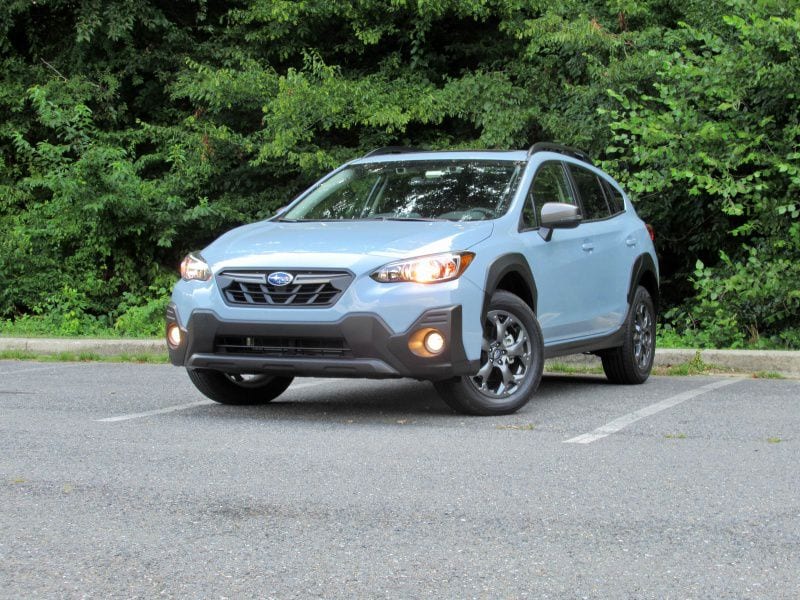
Photo by Brady Holt